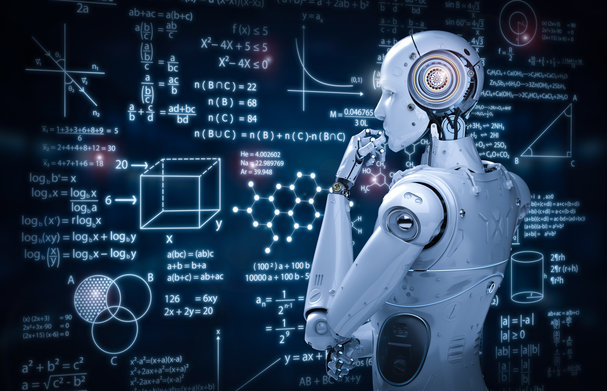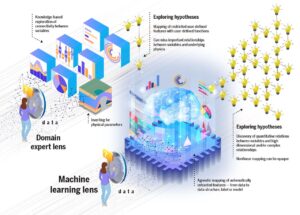The Application of Machine Learning to Scientific Discovery
Permalink: the-application-of-ml-to-scientific-discovery
Tags: Machine Learning, Artificial Intelligence, Scientific Discovery, Data Science, Research, Innovation, Deep Learning, AI in Science
Introduction
For centuries, scientific discovery has been driven by human curiosity, experimentation, and the steady accumulation of knowledge. From Newton’s laws of motion to Einstein’s theory of relativity, progress has traditionally been a painstaking, manual process of observation, hypothesis, and validation. However, with the exponential growth of data in the 21st century, this traditional model faces significant limitations. Enter machine learning (ML)—a subfield of artificial intelligence (AI)—which has rapidly emerged as a transformative force in accelerating and augmenting scientific discovery.
Machine learning thrives in data-rich environments. It identifies patterns, predicts outcomes, and automates processes that would be impossible or prohibitively time-consuming for humans alone. As a result, ML is not only speeding up discoveries but also changing the very nature of how we do science. From drug discovery to particle physics, climate modeling to material science, ML is helping uncover patterns hidden in massive datasets, proposing new hypotheses, and even autonomously designing experiments.
This article explores the diverse applications of ML in scientific discovery, detailing how it is revolutionizing research, the challenges it faces, and what the future holds for AI-assisted science.
1. Understanding Machine Learning in the Context of Science
Before delving into specific applications, it’s important to understand why machine learning is uniquely suited to scientific research:
-
Pattern Recognition: Scientific phenomena often manifest in patterns that are difficult for humans to detect in large datasets. ML algorithms excel at uncovering subtle correlations.
-
Prediction: ML can build predictive models that forecast experimental outcomes or natural processes, saving time and resources.
-
Automation: Routine analysis, data cleaning, and simulation can be automated, allowing scientists to focus on high-level reasoning.
-
Hypothesis Generation: Advanced models like deep learning networks can propose new theories or directions for exploration by identifying unexpected relationships.
By blending these capabilities, ML is no longer just a tool—it is becoming a partner in discovery.
2. Applications of ML Across Scientific Domains
2.1 Machine Learning in Drug Discovery and Healthcare
One of the most celebrated applications of ML in science is in biomedical research and drug development. Traditional drug discovery takes years and billions of dollars, but ML is streamlining the process by:
-
Protein Folding Predictions: DeepMind’s AlphaFold solved the decades-long challenge of predicting protein 3D structures, a breakthrough with profound implications for biology and medicine.
-
Drug Repurposing: ML models analyze molecular interactions to identify existing drugs that could be repurposed for new diseases, as seen during the COVID-19 pandemic.
-
Precision Medicine: By analyzing genomic, proteomic, and clinical data, ML helps design personalized treatment plans tailored to an individual’s biology.
The pharmaceutical industry is now integrating ML into every stage of R&D, from initial compound screening to clinical trial optimization.
2.2 ML in Physics and Astronomy
The physical sciences generate massive datasets, making them fertile ground for machine learning:
-
Particle Physics: Experiments at CERN’s Large Hadron Collider produce petabytes of data. ML helps filter collision events to identify rare phenomena, such as the Higgs boson.
-
Quantum Mechanics: ML models are used to approximate solutions to the Schrödinger equation, accelerating quantum simulations.
-
Astronomy: From identifying exoplanets to analyzing gravitational waves, ML assists in sifting through astronomical datasets. The discovery of new celestial objects often depends on anomaly detection algorithms.
-
Dark Matter and Dark Energy Studies: ML provides tools for modeling large-scale cosmic structures, offering insights into the most mysterious components of the universe.
2.3 Materials Science and Chemistry
The discovery of new materials underpins technological progress in energy, computing, and manufacturing. Traditionally, this required slow, trial-and-error experimentation. ML is now enabling:
-
Inverse Design: Instead of testing countless possibilities, ML can generate candidate materials with desired properties (e.g., superconductors, solar absorbers).
-
Chemical Reaction Prediction: Algorithms can predict how molecules will interact, aiding the design of new compounds.
-
Battery Research: ML accelerates the search for high-capacity, long-lasting materials for batteries and energy storage.
-
Catalyst Design: By analyzing reaction mechanisms, ML can identify more efficient and sustainable catalysts for industrial processes.
This data-driven approach is dramatically reducing the time required for materials discovery.
2.4 Climate Science and Environmental Studies
Climate change presents humanity with one of its greatest challenges, and machine learning is proving invaluable in environmental research:
-
Climate Modeling: ML augments traditional climate models by capturing fine-scale processes, improving predictions of global warming impacts.
-
Extreme Weather Forecasting: Algorithms predict hurricanes, floods, and droughts with greater accuracy and lead time.
-
Remote Sensing and Ecology: ML processes satellite imagery to track deforestation, monitor biodiversity, and assess agricultural health.
-
Carbon Capture Research: Models help identify materials and processes capable of efficiently capturing CO₂ emissions.
By analyzing complex, nonlinear data, ML is providing actionable insights for both policymakers and conservationists.
2.5 Social Sciences and Humanities
Though often overlooked, ML is also transforming disciplines outside the natural sciences:
-
Linguistics: ML models enable deeper analysis of language evolution and structure.
-
Economics and Sociology: Predictive modeling uncovers patterns in human behavior, aiding in policy design.
-
History and Archaeology: ML analyzes ancient texts, reconstructs artifacts, and even predicts locations of undiscovered archaeological sites.
These applications expand the definition of “scientific discovery” to include understanding human societies more deeply.
3. Case Studies in ML-Driven Discovery
Case Study 1: AlphaFold and Protein Folding
AlphaFold’s ability to predict protein structures with remarkable accuracy solved a 50-year-old grand challenge in biology. Its implications for drug design, disease understanding, and synthetic biology are immense.
Case Study 2: Discovering New Exoplanets
NASA and Google AI collaborated to identify previously overlooked exoplanets in Kepler mission data. By training neural networks on known planetary transits, ML uncovered subtle signals hidden in vast datasets.
Case Study 3: New Battery Materials
Researchers at MIT used ML to screen millions of chemical compounds for potential use in lithium-ion batteries. What might have taken decades was accomplished in a matter of months.
4. Challenges and Limitations
While the promise of ML in scientific discovery is immense, challenges remain:
-
Data Quality: ML is only as good as the data it is trained on. Scientific data is often noisy, incomplete, or biased.
-
Interpretability: Many ML models, especially deep learning, act as “black boxes,” making it difficult to extract causal explanations.
-
Computational Costs: Training large models requires significant computational resources and energy.
-
Overfitting Risks: ML models may detect spurious correlations that don’t generalize to real-world phenomena.
-
Ethical and Social Implications: In biomedical research, for example, issues of privacy, bias, and access to ML-driven healthcare solutions remain critical concerns.
5. The Future of ML in Scientific Discovery
Looking ahead, machine learning is poised to become an indispensable partner in scientific exploration. Several key trends will shape its role:
-
Autonomous Science: Fully automated labs where ML systems design and conduct experiments without human intervention are on the horizon.
-
Explainable AI: Advances in interpretability will allow scientists to trust and understand ML-generated hypotheses.
-
Integration with Robotics: Robotic systems guided by ML will accelerate experimentation in chemistry, biology, and physics.
-
Cross-Disciplinary Collaboration: ML will increasingly bridge fields—linking biology with physics, chemistry with environmental science—driving holistic discoveries.
-
Ethical AI for Science: Guidelines and frameworks will ensure responsible, transparent, and equitable use of ML in research.
The synergy of human intuition and machine intelligence is likely to produce discoveries that would have been unimaginable in the past.
6. Final Thoughts
Machine learning is not replacing scientists; it is augmenting their abilities. Just as the microscope revealed worlds unseen and the telescope opened the cosmos, ML is unveiling patterns and relationships buried in data. Its role in scientific discovery is transformative, accelerating the pace of progress, lowering barriers to entry, and expanding the frontiers of knowledge.
We stand at the dawn of a new era where AI-powered discovery may redefine what it means to “do science.” As data grows and ML evolves, the boundaries between hypothesis, experimentation, and discovery will blur, creating a future where breakthroughs occur not over decades but in days.
https://bitsofall.com/https-yourblogdomain-com-self-supervised-learning-ssl-for-large-models/
AI vs Machine Learning – Difference Between Artificial Intelligence and ML






